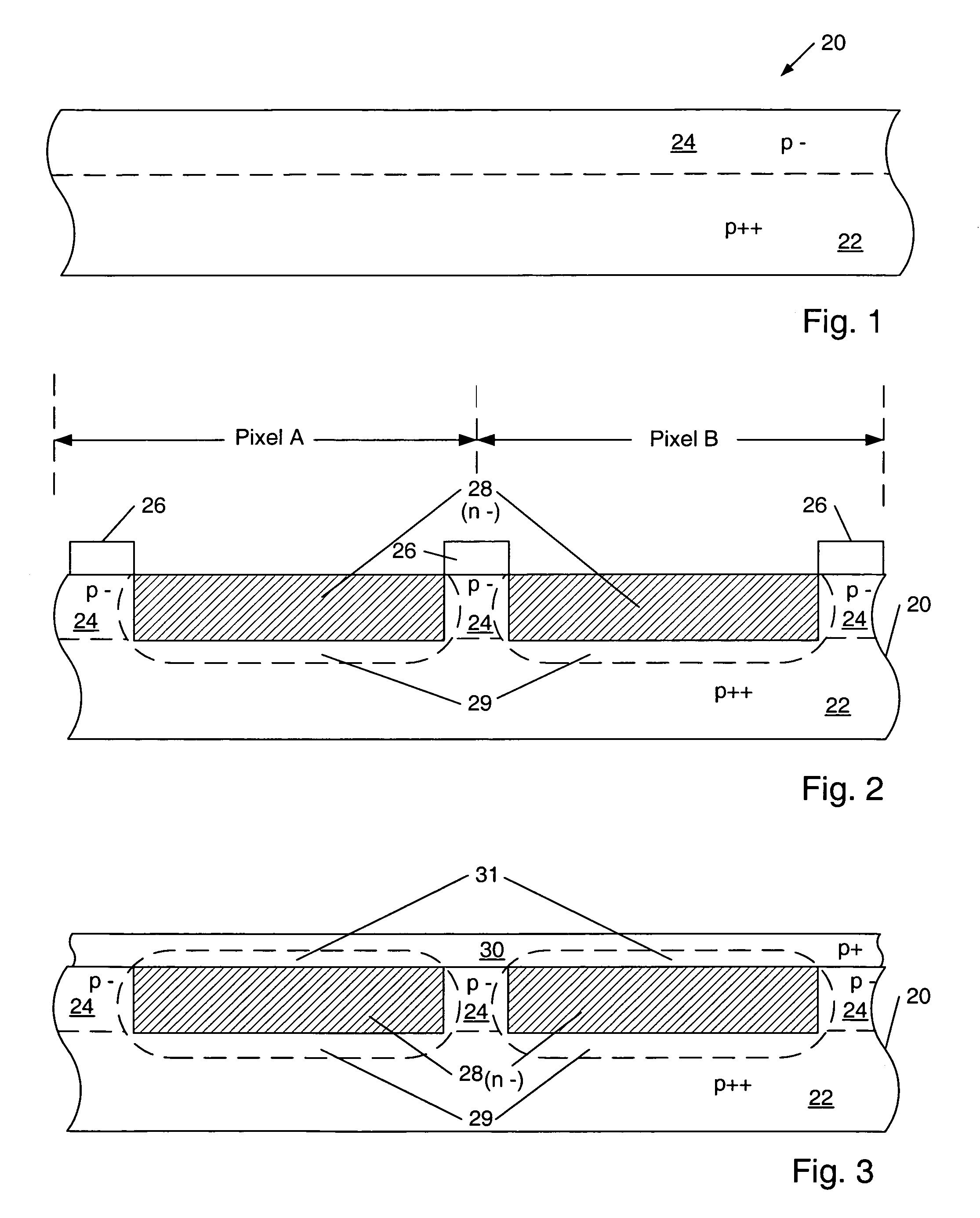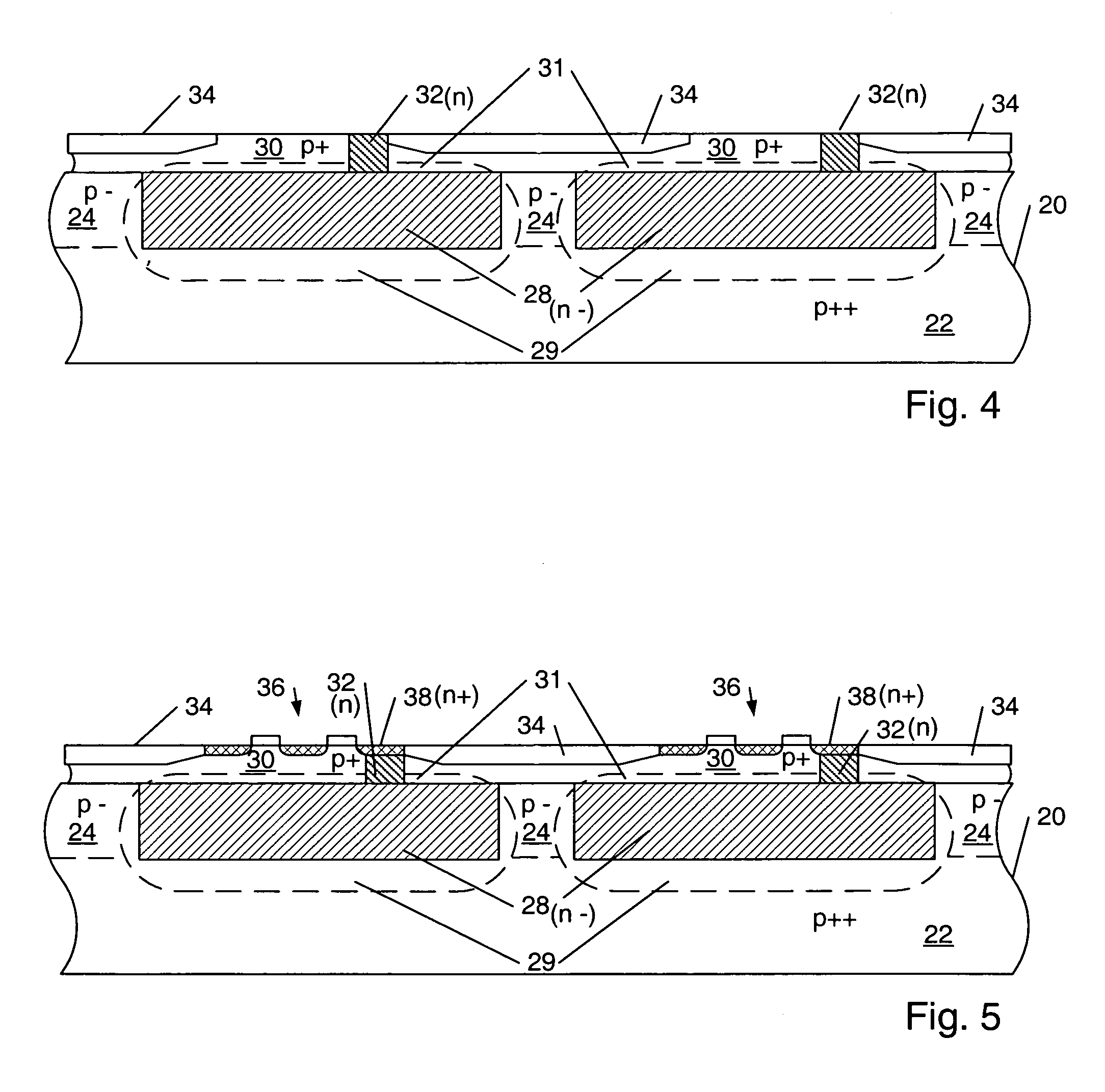Photodiode having a buried well region
a photodiode and well-buried technology, applied in the field of photodiode pixel sensors, can solve the problems of reducing the collection efficiency of the photodiode, undesirably increasing the size of the pixel, and conventional pixel sensors may be limited in their collection efficiency and accuracy
- Summary
- Abstract
- Description
- Claims
- Application Information
AI Technical Summary
Benefits of technology
Problems solved by technology
Method used
Image
Examples
Embodiment Construction
[0020]Turning to the drawings, an exemplary method is provided for forming an exemplary photodiode pixel sensor with a buried region of opposite conductivity type than a semiconductor substrate in which the photodiode is formed. As will be described in more detail below, such a photodiode pixel sensor architecture may advantageously reduce dark current as well as reduce the recombination and loss of photon generated carrier charge due to scattering of electrons. As a result, the photodiode pixel sensor described herein may have higher photon collection efficiency and improved image clarity as compared to conventional photodiode pixel sensors. Furthermore, the photodiode pixel sensor architecture described herein may incorporate active semiconductor devices without increasing the size of the pixel and / or hindering the collection efficiency of the photodiode relative to conventional photodiode pixel sensors.
[0021]FIG. 1 illustrates an exemplary semiconductor topography which may be us...
PUM
 Login to View More
Login to View More Abstract
Description
Claims
Application Information
 Login to View More
Login to View More - R&D Engineer
- R&D Manager
- IP Professional
- Industry Leading Data Capabilities
- Powerful AI technology
- Patent DNA Extraction
Browse by: Latest US Patents, China's latest patents, Technical Efficacy Thesaurus, Application Domain, Technology Topic, Popular Technical Reports.
© 2024 PatSnap. All rights reserved.Legal|Privacy policy|Modern Slavery Act Transparency Statement|Sitemap|About US| Contact US: help@patsnap.com










